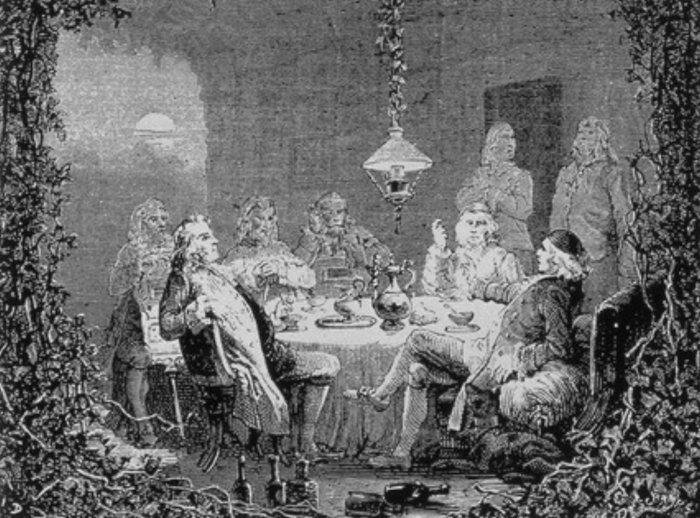Lunar Society: Great Scientists Of The 18th Century Who Changed The World
Cynthia McKanzie - AncientPages.com - The Lunar Society consisted of great scientists whose ideas and inventions changed the world forever. Not everyone could become a member of the Lunar Society. This club served as a gathering place for scientists, inventors, and natural philosophers during the second half of the 18th century.
Members of the Lunar Society met regularly on the Monday nearest the full Moon between 1765 and 1813 in Soho House in Birmingham, England.
These gifted polymaths used to joke and call themselves lunatics, but this could not have been much further from the truth. They met nearest the full Moon simply because the light was better at night and thus ensured the members a safer journey home along the dangerous, unlit streets.
The Lunar Society never had more than 14 core members. Each member was noted for their particular area of expertise, including the most outstanding engineers, scientists, and thinkers of the day.
They were not only interested in science but especially in applying science to manufacturing, mining, transportation, education, medicine, and much else. It would be more appropriate to describe them as a revolutionary committee of that most far-reaching of all the eighteenth-century revolutions, the Industrial Revolution. Supremely confident, they were changing the world forever, and they knew it. They firmly believed that what they were doing would benefit humanity.
Visits and correspondents often swelled the ranks of the dozen regular members of the Lunar Society from more peripheral members, including Thomas Jefferson, Benjamin Franklin, Sir Richard Arkwright, Thomas Bedoes, Anna Seward, John Smeaton, etc.
Statue of Matthew Boulton, James Watt and William Murdoch in Broad Street, Birmingham. Credit: Public Domain
Among the members were great thinkers like:
Joseph Priestley, a minister of religion and amateur scientist who discovered oxygen, the indiarubber eraser and much else, invented carbonated water.
William Murdock, inventor of gas lighting.
William Small, doctor of medicine who had taught mathematics to the young Thomas Jefferson and who had interests in engineering, chemistry and metallurgy.
Jonathan Stokes, botanist.
James Watt, inventor of the condensing and rotary steam engines, an early copying process and much else; maker of musical and scientific instruments, canal surveyor, and more.
Josiah Wedgwood, celebrated potter, canal promoter and Charles Darwin's other grandfather.
John Whitehurst, maker of clocks and scientific instruments, and a pioneering geologist who did much to work out how the earth had been formed.
William Withering, another medical doctor, also a botanist with interests in metallurgy and chemistry. He is most famous for discovering the medicinal properties of the foxglove in treating heart disease, and took the place of William Small following the latter's untimely death in 1775.
The American statesman Benjamin Franklin was a corresponding member of the society, as were others including John Smeaton, the great civil engineer.
Meeting of the Lunar Society at Soho House late 18th century. Science Museum
What is not commonly known is that the Lunar men instigated the anti-slavery movement, with Thomas Bicknell writing an anti-slavery poem, 'The Dying Negro’ (1773), and Wedgwood produced medallions showing a chained slave with the motto "Am I not a man and a brother."
They wanted to bring poverty, science, and social consciousness to the debate and improve our world.
These passionate, optimistic, idealistic individuals marked their place in the world as the new class, the nonconformists and reformers whose domination we feel now.
Although their informal meetings were a mixture of social gatherings, experiments, and discussions, they led to significant progress and scientific achievements that significantly improved our society.
Updated on August 3, 2022
Written by Cynthia McKanzie - AncientPages.com Staff Writer
Copyright © AncientPages.com All rights reserved. This material may not be published, broadcast, rewritten or redistributed in whole or part without the express written permission of AncientPages.com
Expand for referencesMore From Ancient Pages
-
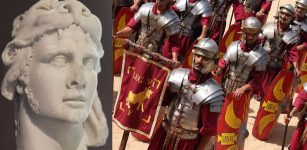 Rome’s Most Wanted Enemy – Poison King Mithradates Murdered 80,000 Roman Civilians
Ancient History Facts | Dec 17, 2017
Rome’s Most Wanted Enemy – Poison King Mithradates Murdered 80,000 Roman Civilians
Ancient History Facts | Dec 17, 2017 -
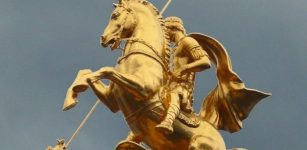 Saint George: Knight Warrior Who Refused To Denounce His Faith And Died A Martyrs Death
Featured Stories | Jun 3, 2019
Saint George: Knight Warrior Who Refused To Denounce His Faith And Died A Martyrs Death
Featured Stories | Jun 3, 2019 -
 Why Did Modern Humans Replace The Neanderthals? The Key Might Lie In Our Social Structures
Featured Stories | Jun 18, 2024
Why Did Modern Humans Replace The Neanderthals? The Key Might Lie In Our Social Structures
Featured Stories | Jun 18, 2024 -
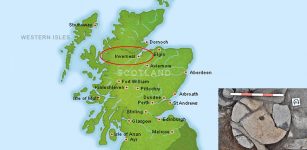 Mysterious Ancient Ruins Of Fortress Discovered In Scottish Highlands
Archaeology | Jan 16, 2018
Mysterious Ancient Ruins Of Fortress Discovered In Scottish Highlands
Archaeology | Jan 16, 2018 -
 The Parthenon Marbles Evoke Particularly Fierce Repatriation Debates – An Archaeologist Explains Why
Artifacts | Jul 1, 2024
The Parthenon Marbles Evoke Particularly Fierce Repatriation Debates – An Archaeologist Explains Why
Artifacts | Jul 1, 2024 -
 Prehistoric Rock Art Discovered Near Kadiri, Andhra Pradesh, India
Archaeology | Dec 5, 2015
Prehistoric Rock Art Discovered Near Kadiri, Andhra Pradesh, India
Archaeology | Dec 5, 2015 -
 European Mythical Creatures Encountered In The Witcher Series
Featured Stories | Feb 4, 2020
European Mythical Creatures Encountered In The Witcher Series
Featured Stories | Feb 4, 2020 -
 Puzzling Sakwala Chakraya Carving Could Be World’s Oldest Map Of The Universe – Mystery Of Sri Lanka’s Stargate
Featured Stories | May 15, 2021
Puzzling Sakwala Chakraya Carving Could Be World’s Oldest Map Of The Universe – Mystery Of Sri Lanka’s Stargate
Featured Stories | May 15, 2021 -
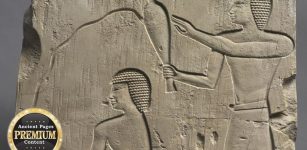 Daily Life Of Priests And Priestesses In Ancient Egypt
Ancient History Facts | Apr 5, 2018
Daily Life Of Priests And Priestesses In Ancient Egypt
Ancient History Facts | Apr 5, 2018 -
 Neanderthals Hunted Dangerous Cave Lions In Eurasia – New Study Shows
Archaeology | Oct 12, 2023
Neanderthals Hunted Dangerous Cave Lions In Eurasia – New Study Shows
Archaeology | Oct 12, 2023 -
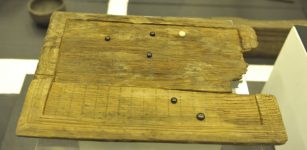 Unique More Than 1,600-Year-Old Board Game With Pieces Recovered From Roman Soldier’s Tomb
Archaeology | Jan 6, 2018
Unique More Than 1,600-Year-Old Board Game With Pieces Recovered From Roman Soldier’s Tomb
Archaeology | Jan 6, 2018 -
 World’s Oldest Burial Site Reveals Homo Naledi Buried Their Dead 100,000 Years Before Humans
Archaeology | Jun 6, 2023
World’s Oldest Burial Site Reveals Homo Naledi Buried Their Dead 100,000 Years Before Humans
Archaeology | Jun 6, 2023 -
 Ancient Sahul: Its Submerged Landscapes Reveal A Mosaic Of Human Habitation
Archaeology | Dec 26, 2023
Ancient Sahul: Its Submerged Landscapes Reveal A Mosaic Of Human Habitation
Archaeology | Dec 26, 2023 -
 Strange 1,000-Year-Old Artifact Melted Out Of The Ice Identified With Help Of Photo!
Archaeology | Jan 31, 2023
Strange 1,000-Year-Old Artifact Melted Out Of The Ice Identified With Help Of Photo!
Archaeology | Jan 31, 2023 -
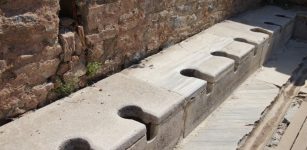 First Pay Toilets Were Invented In Ancient Rome In 74 A.D.
Ancient History Facts | Jan 29, 2017
First Pay Toilets Were Invented In Ancient Rome In 74 A.D.
Ancient History Facts | Jan 29, 2017 -
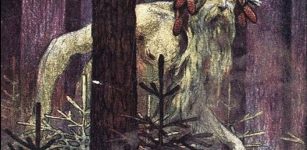 Leshy: Master Of Forest And Wildlife In Slavic Beliefs
Featured Stories | Mar 25, 2016
Leshy: Master Of Forest And Wildlife In Slavic Beliefs
Featured Stories | Mar 25, 2016 -
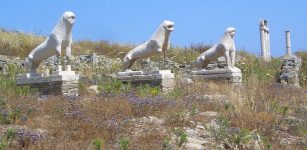 Mystery Of The Marble Lions On The Sacred Island Of Delos Solved?
Archaeology | Oct 12, 2021
Mystery Of The Marble Lions On The Sacred Island Of Delos Solved?
Archaeology | Oct 12, 2021 -
 Crimean Atlantis: Remarkable Ancient Underwater City Of Akra
Featured Stories | Mar 6, 2017
Crimean Atlantis: Remarkable Ancient Underwater City Of Akra
Featured Stories | Mar 6, 2017 -
 Pre-Clovis, Paisley Caves: Archaeologists Identified The Earliest Population Of North America
Archaeology | Jul 16, 2020
Pre-Clovis, Paisley Caves: Archaeologists Identified The Earliest Population Of North America
Archaeology | Jul 16, 2020 -
 Teotihuacán: Enigmatic Birthplace Of The Gods And Its Obscure History
Civilizations | Jul 26, 2016
Teotihuacán: Enigmatic Birthplace Of The Gods And Its Obscure History
Civilizations | Jul 26, 2016



